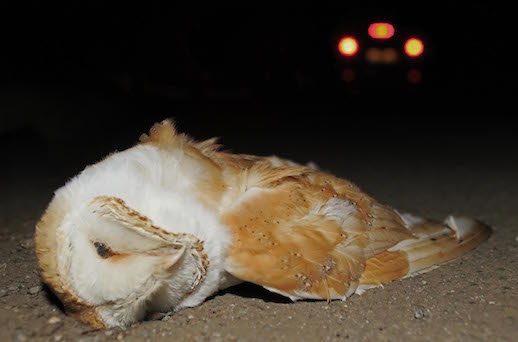
Words and pictures: Mat Bingham
My earliest memory of a barn owl was driving home with dad in the winter; we rounded a bend on the lonely fenland road and were greeted by a white ghost hovering above the verge. I was eight years old and can still remember it clearly. White feathers with mottled fawn upper edges and its haunting gaze as it appeared to float in the air like an apparition. Thirty two years later and we live with wild barn owls hunting in the hay meadows surrounding our house.
There are five species of owl in the UK; the barn owl is the rarest but probably the easiest to see. The best time for barn owl watching is on a warm summer evening when conditions are quite still. They normally follow the same hunting pattern each night moving further away from their roost or nest site until they make a successful kill, usually a field vole although they will catch other rodents and sometimes small birds. They will either take their prey back to the nest if they are feeding young, or settle on a favourite perch to devour it whole. After a few hours they regurgitate a pellet containing the parts that they cannot digest: mainly fur and bones. Some of these pellets are quite large and can contain the remains of more than one animal. To stay in good condition a barn owl needs to eat two or three field voles a night.

They hunt using sight and sound and are perfectly adapted to using these senses to find prey. Their vision is based on movement and is much more acute than ours; they can spot tiny field voles in long grass and can probably see urine trails made by the rodents. Their acute vision is useful when hunting in daylight, or on a night when the moon is bright. Their heart-shaped heads are a function of evolutionary adaption: the shape of the face acts like a radar dish, capturing sound and funnelling it to their ears.
Unlike most other birds the barn owl flies silently. This has two advantages: (i) the prey is not alerted to the owl’s presence overhead, and (ii) the owl is helped to locate its prey by ensuring that its wing beats do not mask the sound of movement from below. This silent flight is enabled by feathers with frayed edges, which reduce friction with the air. The owl’s leisurely flight is ideally suited to scanning the ground. Once the prey is spotted the owl spills the air from its wings and drops from above, the prey unaware of the owl until it is too late. Talons make sure the prey is immobilised and stop any chance of the owl being bitten. Field voles and other small rodents have surprisingly large front teeth which can injure an owl. The sharp beak then puts an end to the struggling prey if it is still alive.

There is one significant drawback to what evolution has given this ghostly hunter, which is that its feathers are not waterproof. As a consequence, barn owls prefer to hunt in dry conditions, although in my experience hunger will drive them to hunt any time of the day or night. I have watched a barn owl trying to hunt in gale force winds and driving rain at lunchtime.
Barn owls can have up to five chicks in a brood and more than one brood in a year. The female lays her eggs over several weeks and they hatch in the order they were laid. The result is that the chicks range in size. If the adult birds struggle to find enough food, it becomes a fight for survival and the chicks can become cannibalistic.
Barn owls usually mate for life but often, outside of the breeding season, live separate lives to their partners. A breeding pair can hold adjacent territories and sleep in separate roosts during the autumn and winter months. Barn owls have more than one roost within their territory.
It is difficult to tell the difference between the male and female birds at a distance. A closer inspection reveals the female to be bigger than the male, with darker feathers on her chest.
A common misconception is that barn owls only live in barns: they also nest or roost in tree hollows, which can bring them into conflict with tawny owls. The pair that live near our home nest in an old ash tree, whilst the adjacent tree is the home of a female tawny owl.
The life expectancy of a barn owl in the wild is about four years, although the mortality rate is high. Collisions with cars have a significant impact on owl numbers, especially in the breeding season – loss of either bird, if they have young, can result in the chicks starving.

Another cause of death for barn owls is the cattle trough. The birds land in the trough to bathe, but their feathers quickly become waterlogged and they cannot get out. This can easily be avoided by the addition of some wooden blocks or a ramp in the trough, enabling the owl to climb out.
It’s spring now and we are increasingly seeing our barn owls hunting at dusk from our kitchen window. Hopefully the rain will stop soon and they will breed successfully this year.

See more of Mat’s stunning wildlife photography on his website